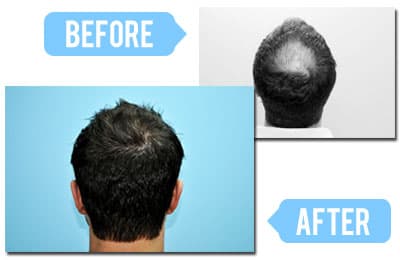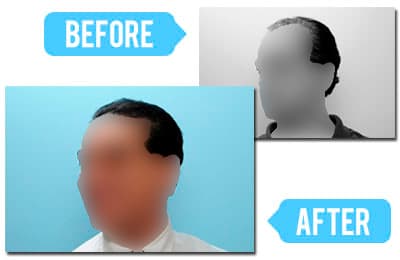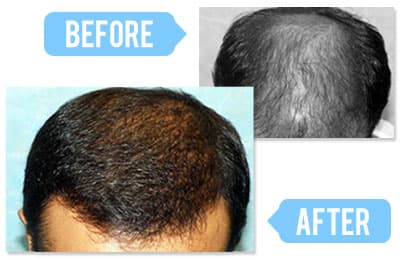Effective Men's Hair Loss Therapy for Thicker Hair
Ultimate Guide to Men’s Hair Loss Therapy and Hair Restoration Solutions
Hair loss is a common issue faced by men of all ages, affecting confidence, self-esteem, and even social interactions. Thankfully, modern science offers numerous effective options for combating baldness and promoting hair regrowth for men. Whether you're experiencing early-stage thinning or significant hair loss, there are treatments available that can help restore your hair—and your confidence.
This comprehensive guide explores the most effective options for men’s hair loss therapy, including both surgical and non-surgical methods, with a special focus on male hair transplant procedures and long-term hair restoration for men.
Understanding Hair Loss in Men Why It Happens
Hair loss in men can occur due to various reasons, including:
- Genetics (Androgenetic Alopecia): The most common cause of male hair loss, often called male pattern baldness.
- Hormonal Imbalances: Dihydrotestosterone (DHT) is known to shrink hair follicles, leading to hair loss.
- Stress & Lifestyle Factors: Poor diet, lack of sleep, and chronic stress contribute to hair thinning.
- Medical Conditions: Thyroid disorders, autoimmune diseases, and scalp infections may cause hair loss.
- Medications: Certain drugs used to treat cancer, high blood pressure, or depression can trigger hair loss.
Early diagnosis is essential for effective treatment. The sooner you take action, the higher the chances of reversing the damage.
Men’s Hair Loss Therapy Non-Surgical Treatments
Before considering surgery, many men opt for non-invasive therapies that can slow or stop hair loss and encourage new growth. Some of the most popular men’s hair loss therapy options include

1. Minoxidil (Rogaine)
A topical treatment approved by the FDA, Minoxidil stimulates hair follicles and improves blood circulation. It works best for early-stage hair loss and must be used consistently.
2. Finasteride (Propecia)
An oral prescription drug that reduces DHT levels in the scalp. It’s highly effective in preventing further hair loss but may have side effects and is not suitable for everyone.
3. Low-Level Laser Therapy (LLLT)
LLLT uses red light therapy to activate hair follicles, improve scalp health, and encourage regrowth. It’s painless and suitable for use at home.
4. Platelet-Rich Plasma (PRP) Therapy
PRP involves drawing a small amount of your blood, processing it to concentrate the platelets, and injecting it into the scalp. This boosts healing and stimulates dormant hair follicles.
5. Hair Growth Shampoos & Serums
Over-the-counter or prescription-strength shampoos containing ingredients like biotin, ketoconazole, and caffeine can support hair health.
Hair Restoration for Men Combining Treatments for Optimal Results
Hair restoration for men often involves combining several therapies to achieve long-lasting results. For example, PRP therapy can be used in conjunction with Minoxidil, or Finasteride can be prescribed alongside laser therapy.
In addition to treatments, lifestyle changes such as eating a balanced diet, reducing stress, quitting smoking, and taking supplements can significantly impact the outcome.
Supplements like biotin, saw palmetto, and vitamin D are especially helpful for men looking to improve scalp health and stimulate growth.
Male Hair Transplant A Permanent Hair Loss Solution
When hair loss has progressed beyond the point where medications or non-surgical treatments are effective, a male hair transplant becomes the most viable and permanent solution.
There are two main types of transplant methods:
1. FUE (Follicular Unit Extraction)
This modern, minimally invasive procedure involves extracting individual hair follicles from the donor area (typically the back of the scalp) and implanting them into bald or thinning areas.
2. FUT (Follicular Unit Transplantation)
FUT involves removing a strip of scalp from the donor area and dividing it into grafts. This method allows for transplanting a large number of follicles but may leave a scar.
Why Choose a Male Hair Transplant?
- Natural Results: When done by an expert, transplanted hair looks completely natural.
- Permanent Solution: Once implanted, hair continues to grow naturally for a lifetime.
- Minimal Maintenance: Unlike topical treatments, a transplant doesn’t require daily upkeep.
While more expensive than other treatments, a male hair transplant offers excellent value in terms of long-term results and self-confidence.
Hair Regrowth for Men What to Expect
Whether you choose non-surgical therapy or undergo a hair transplant, it’s important to manage your expectations. Hair regrowth for men is a gradual process and may take several months to see noticeable results.
Here’s a timeline of what to expect:
- First 2 Weeks: Shedding of newly implanted or treated hair is common. Don’t panic—this is part of the process.
- 1–3 Months: New hair begins to grow, although it may be thin or fine at first.
- 4–6 Months: Hair becomes more noticeable, with improved texture and thickness.
- 6–12 Months: Full results become visible, and hair continues to grow naturally.
Remember that consistency is key, especially for therapies like Minoxidil and Finasteride.
Choosing the Right Hair Loss Treatment Key Considerations
Not every treatment is suitable for every man. Consider the following when choosing your approach:
- Severity of hair loss: Early stages can often be reversed with medication, while advanced cases may require transplantation.
- Budget: Some treatments are more cost-effective than others in the short or long term.
- Side effects: Always consult a doctor before starting medications.
- Lifestyle compatibility: Can you commit to daily applications or regular clinic visits?
A personalized consultation with a trichologist or hair restoration specialist can guide you toward the best solution.
FAQs: Men’s Hair Loss Therapy & Hair Restoration
Q1: What is the best treatment for male hair loss ?
A: The best treatment varies by individual, but Minoxidil, Finasteride, and PRP therapy are commonly used. For permanent results, hair transplant surgery is recommended.
Q2: Is male hair transplant painful?
A: Most procedures are done under local anesthesia, so discomfort is minimal. Recovery is generally quick with minimal downtime.
Q3: Can hair regrowth for men happen naturally ?
A: In early stages of hair loss, lifestyle changes and proper scalp care can help. However, medical or surgical intervention is often needed for lasting results.
Q4: How long does it take to see results from men’s hair loss therapy ?
A: It can take 3–6 months to notice significant improvement, depending on the treatment used and the individual’s response.
Q5: Are hair loss treatments permanent ?
A: Some treatments, like transplants, are permanent. Others, such as Minoxidil or Finasteride, require continued use to maintain results.
Conclusion
Hair loss is no longer a life sentence. With a range of proven therapies—from topical medications and laser treatments to advanced male hair transplants—men today have more options than ever to restore their hair and regain confidence. Whether you're just starting to notice thinning or are already considering surgical solutions, the key is early action and expert guidance.
If you're ready to invest in your appearance and self-esteem, start exploring the most effective hair regrowth for men options today and take the first step toward a fuller, healthier head of hair.
BOOK YOUR FREE
CONSULTATION
Male Pattern Baldness (MPB) is progressive. A Stage 3 vertex can become a Stage 5 in less than 18 months. Waiting increases the cost and difficulty of your surgery.
Or give us a call on
020 8902 2270
(tap to call from your mobile)
Our team has helped many clients explore hair restoration options — see real patient stories.
Our hair products are second to none, therefore we’re proud of the positive feedback from many clients over the years. See for yourself the dramatic transformations brought about by regular use of HGC products and treatment. (Individual outcomes vary, but many clients report noticeable improvements over time.)



